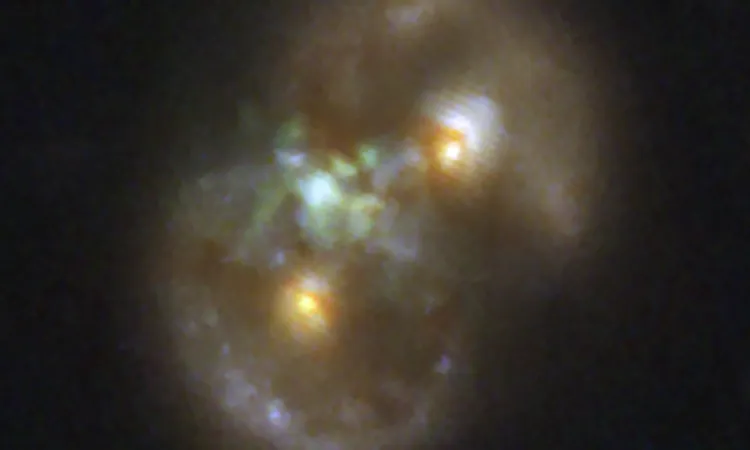
The Grim Legacy of Mastodon Extinction: South American Ecosystems in Crisis
2025-06-17
Author: John Tan
A Forgotten Giant's Impact on Ecosystems
When mastodons vanished from South America around 10,000 years ago, they took more than their impressive size; they left a gaping hole in the continent's ecological web. Recent research reveals that these massive creatures were key players in the propagation of large-fruited trees, forever altering landscapes and leaving many species on the brink of extinction.
New Discoveries Uncover the Dietary Habits of Mastodons
A groundbreaking study analyzed ninety-six fossilized molars from the species Notiomastodon platensis, unearthed along a 1,500-kilometer expanse of Chile’s coastline. Scientists delved into microscopic wear patterns and chemical residues trapped within dental calculus to piece together the mastodon's dietary history.
Fruit Lovers of the Past
Florent Rivals, a researcher at IPHES-CERCA, stated, "We discovered starch residues and plant materials typical of fleshy fruits, including those from the Chilean palm (Jubaea chilensis)." These remnants provide crucial evidence that mastodons didn’t just nibble on fruits, but consumed them whole, transporting seeds far into the wild.
Proving a Long-held Hypothesis
The study also revisits a bold hypothesis from 1982, proposed by biologist Daniel Janzen and paleontologist Paul Martin, which suggested that many tropical trees evolved their large, sweet fruits to entice now-extinct megafauna like mastodons. With new findings supporting this idea, researchers have confirmed the monumental role these creatures played in seed dispersal.
A Bleak Future for South American Flora
Unfortunately, the extinction of mastodons has left modern ecosystems scrambling. With no equivalent size and roaming ability to fill their shoes, current seed dispersers such as tapirs and monkeys cannot adequately replace these ancient giants.
Recent machine-learning analyses indicate that in central Chile, a staggering 40% of trees reliant on these ancient dispersers are now threatened or endangered.
The Last Survivors of a Great Partnership
Today, iconic species such as the Chilean palm and the monkey-puzzle tree cling to the edges of survival, now unable to propagate efficiently due to the absence of their once-vital dispersers. This is particularly evident in species like the gomortega (Gomortega keule), whose smaller fruit now rarely travels beyond the plant’s shadow.
Lessons from the Past for Present Conservation
This research serves as a dire warning and a call to action: ecosystems can feel the effects of lost species for thousands of years. Recognizing this, some advocates are proposing 'rewilding' initiatives, using modern large herbivores to attempt to fill the void left by mastodons.
As the climate crisis looms and habitats fragment, these insights underscore the importance of protecting the connections between trees and their ancient mammalian gardeners to help restore endangered ecosystems.
Hope for the Future
Paleontologist Andrea P. Loayza succinctly summarizes the findings, saying, "Where that ecological relationship between plants and animals has been severed, the consequences remain visible even thousands of years later." Through these investigations, we may find pathways to foster revival in regions struggling against the tides of time.
The study has been published in the journal *Nature Ecology & Evolution*.






 Brasil (PT)
Brasil (PT)
 Canada (EN)
Canada (EN)
 Chile (ES)
Chile (ES)
 Česko (CS)
Česko (CS)
 대한민국 (KO)
대한민국 (KO)
 España (ES)
España (ES)
 France (FR)
France (FR)
 Hong Kong (EN)
Hong Kong (EN)
 Italia (IT)
Italia (IT)
 日本 (JA)
日本 (JA)
 Magyarország (HU)
Magyarország (HU)
 Norge (NO)
Norge (NO)
 Polska (PL)
Polska (PL)
 Schweiz (DE)
Schweiz (DE)
 Singapore (EN)
Singapore (EN)
 Sverige (SV)
Sverige (SV)
 Suomi (FI)
Suomi (FI)
 Türkiye (TR)
Türkiye (TR)
 الإمارات العربية المتحدة (AR)
الإمارات العربية المتحدة (AR)